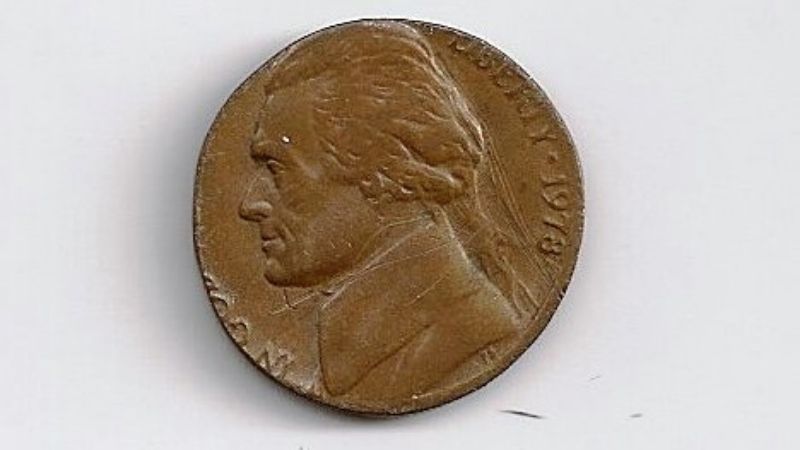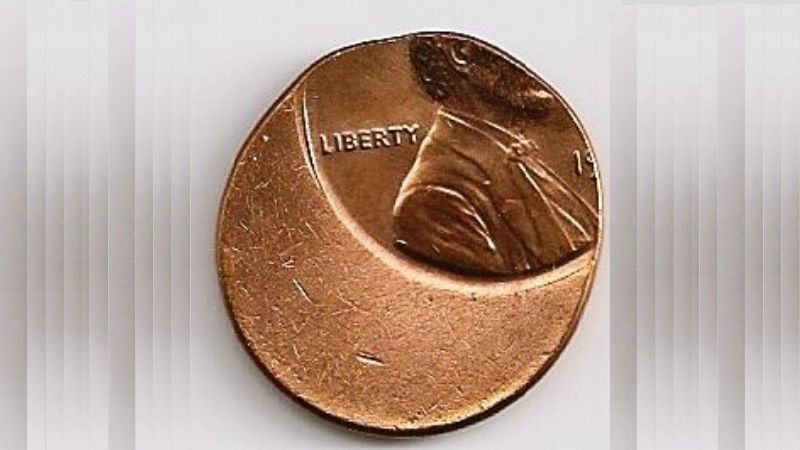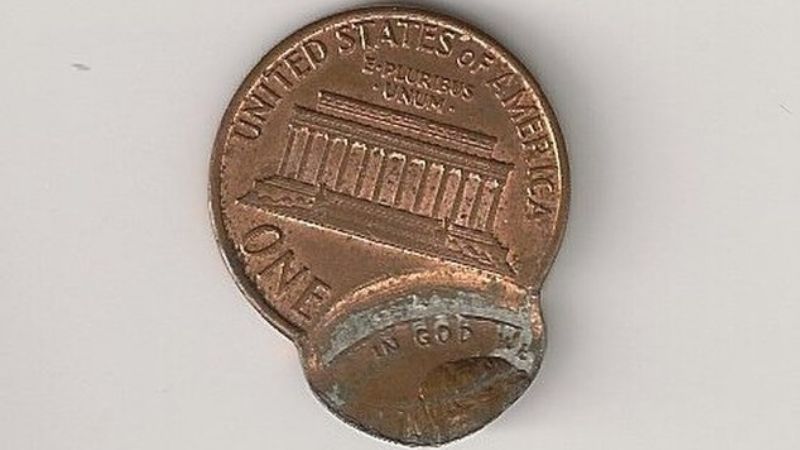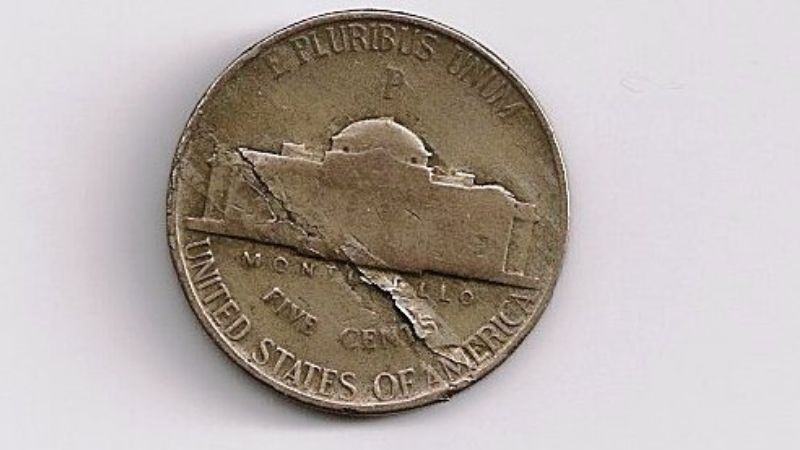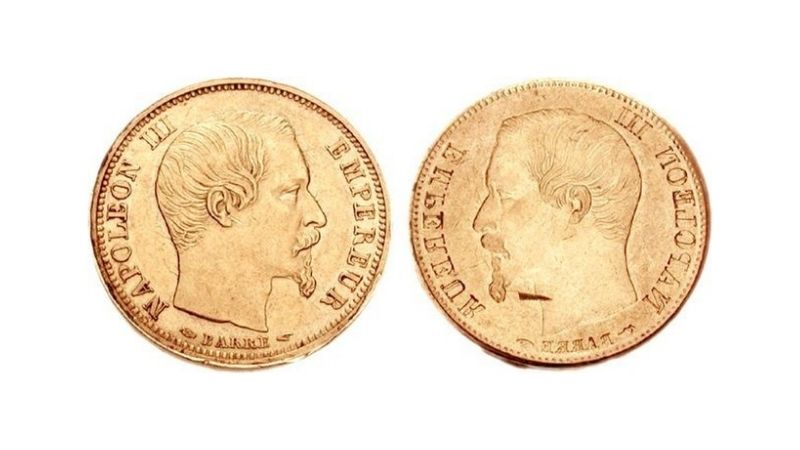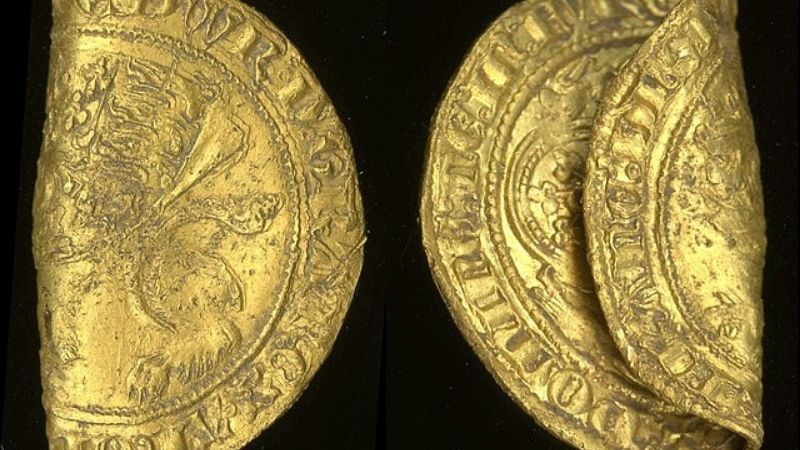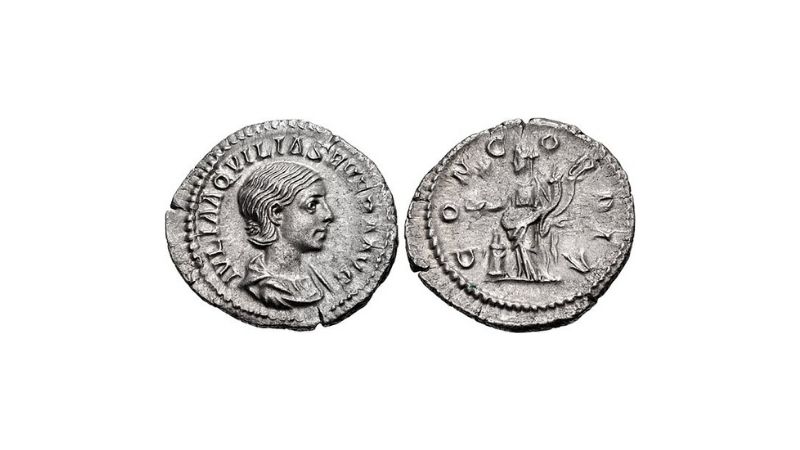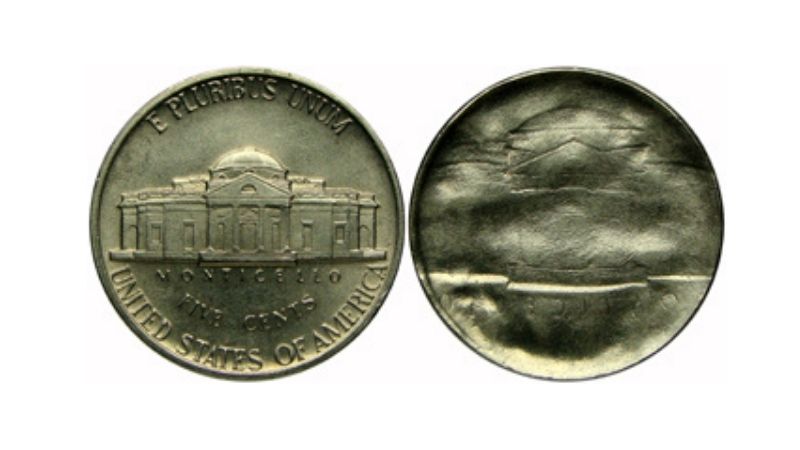Coins worth money with mint errors: this is what collectors look for
Publicēšanas laiks - 2022.04.28
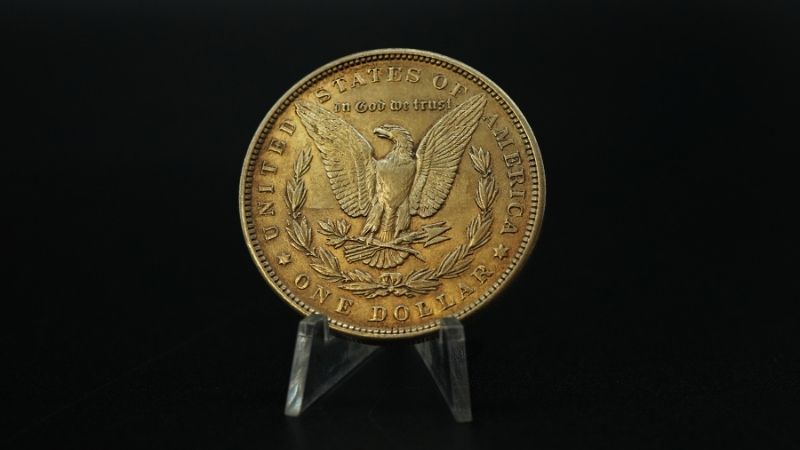
Collectors all around the world value coins for numerous reasons you wouldn’t believe exist. During the coin minting process, numerous errors occur: from wrong denomination to two bonded separate coins.
Mint error coins, in particular, are supposed to be used for nothing at all. But apparently, they can be an exciting and unique addition to one’s coin collection.
Manufacturers usually eliminate coins with mint errors. Some of them, though, manage to slip through and end up as a part of daily circulations and become coins worth money.
Frankly, these coins are worth money in sums that significantly exceed their face value, depending on the rarity and mint error. Their values range from a few dollars to several hundred thousand. Here is a list of the most notable mint errors:
Gold US error coins
Value: $2500 - $250000
Collectors consider this error coin among the most valuable of all. Because these are extremely rare, some sellers ask up to $100000 for them! American Gold Eagle $10 quarter-ounce bullion coins are one of the most common instances of gold mint mistake coins. Manufacturers mistakenly struck them with an unfinished Proof obverse die that includes the unnecessary mint mark „w“. The value of erroneous coins increases over time, just like that of normal coins. As a result, buying one of those has a lot of potential for profit.
Transitional Errors
Value: $2500 - $250000
A transitional mistake occurs when a coin is struck on a planchet from the previous year, but the metal composition is different. There is a number of transitional errors that are in circulation:
- The 1943 Lincoln cents minted on 1942 bronze blanks are the most famous example of these coin mint mistakes.
- Instead of being clad, the 1965 currency was produced in silver.
- Other individual examples are extremely unusual to come across in circulation. However, they do exist.
Wrong planchet
Value: $125 - $200000
This mint error occurs when coins are fed into the press of the wrong denomination. This results in the press stamping the coin with a design intended for coins of different sizes. Despite the fact that these coins are generally detected and destroyed by the producers, collectors tremendously appreciate the coins that slip through.
Off-Center error coin
Value: $75 - $125 000
This is one of the most well-known mint error coins. This issue happens when a blank feed the coins into the press, causing them to settle incorrectly in the collar. The coin is struck once, although off-centre, as a result of this error that can be caused by various reasons. The strike rather targets the border of the coins, rather than in the centre. This results in a non-circular look.
Die cap mint error
Value: $50 - $75 000
Collectors consider die caps as one of the most valuable mint errors. On average, these coins command a higher premium than other mint faults. This error happens when a newly struck coin adheres to the hammer die multiple times and lingers long enough to form the bottle cap shape. At this point, the number of hammer strikes the coin receives varies. As a result, they come in a variety of thicknesses and can also include a raised ghost image known as "late-stage capped die hits."
Multi struck coins error
Value: $200 - $50 000
Following the procedure of the dies striking a blank planchet, the feeders must discharge the struck coin from the collar into a chute. If the coin becomes trapped between the dies, a second or third strike may occur. Stuck coin appears to come in a variety of mistake combinations.
Indent coins
Value: $10 - $30 000
Indent mint error occurs when two blank planchets accidentally get struck into the same collar. The hammer slams on the coins, which are stacked on top of each other. It produces a rare form of imprint when a blank for one denomination lands on top of a blank for another denomination.
Dual denomination mint error
Value: $750 - $20 000
Coins that exhibit this kind of mint mistake are highly sought by coin collectors. When a coin connects with a previously struck coin of the same denomination, this error occurs. The coin is then struck once more using a die designed for a separate coin. An imprint of the foreign denomination on a coin can be seen in varied visibilities on these coins.
Die adjustment strike mint error
Value: $50 - $20 000
One of the more unusual coin faults is the adjustment strike error. Manufacturers must ensure that the correct striking pressures are used while striking coins to ensure the finest quality. If it is not properly regulated, it might result in the die breaking the coin or the coin being struck with insufficient force.
To determine the right pressure, manufacturers strike a series of test planchets first. A die trial is an error that happens when a weak strike occurs during the manufacturing process. Mints usually destroy these coins as they are rarely found in circulation.
Struck through feeder finger
Value: $2500 - $15 000
Feeder fingers feed the coin planchet into the striking chamber, but sometimes due to malfunctions, it gets stuck. The impressions on a coin struck through the feeding finger are concave, straight, and angular. When a coin is tucked and hit through a feed finger, it is frequently broken or torn apart.
Bonded coins
Value: $1500 - $12 500
The feeder mechanism that provides blank planchets to the coinage press is to blame for this mint mistake. When a struck coin is not correctly ejected and another planchet is inserted into the collar and struck, the problem occurs. The pressure of the impact causes the coins to compress and join together.
Brockages
Value: $50 - $12 500
This coin mint error involves two coins. When one of the coins sticks to the die, this mistake occurs. Which causes the image of the struck coin to be impressed into the following blank planchet. As a result, one side of the coin has the regular design while the other has a mirror reflection of the same design.
Mint error coins do occasionally sneak through quality control and end up in circulation. Rare coin collectors ultimately uncover these coins, making them valuable.
Fold over strike
Value: $750 - $10 000
These kinds of coin errors are one of the most extreme ones on the list. When a coin finds itself vertically between the dies, this mistake happens. The hits are so powerful that they cause the coin to bend and fold. This flaw manifests in a variety of shapes and sizes. It is determined by the number of strikes received by the die as well as the strength strike itself.
Broad struck coins
Value: $40 - $10 000
The broadstrike mint mistake results in coins that are flatter and wider than typical. What causes this coin error? Mechanical flaws, for the most part, result in the retaining collar losing the coin while it is designed to keep it. The mistake is produced when the metal leaks outward and deforms the coin's rim as it is hammered between the presses.
Fragment errors
Value: $75 - $5000
Struck fragments are little chunks and coin metal fragments that remain after the blanking process. If a coin fragment weighs 25% or more of the total weight of the coin, it is considered a struck fragment.
Uniface strikes
Value: $20 - $4000
Uniface coins occur when during minting two blank planchets occur in the press at the same time. This stops the design from being stamped on the coin's obverse or reverse. As a result, there are numerous coin varieties with uniface faults.
These coins may also have an off-center design in addition to a blank center. Usually, a variety of mechanical problems cause this mint error.
Conclusion
For some people coin collecting concept might come across as alien. Collectors sometimes compare it to a fever that wouldn‘t go away until that missing coin ends up in the collection.
Want to dive into coin collecting? Choosing a reputable provider is the first step, as some mint errors can be faked. Choosing graded coins is the best way to go, however, some cheaper errors are not certified. The grading of the coin sometimes costs more than the coin itself. That is why it is important to buy from trusted, licensed retailers.
Moreover, when thinking about a valuable investment with potential, older coins with mint errors might just fall under the category. Nowadays with modern technology, some types of errors occur less likely now and don’t seem to be as valuable in the market.
And if you are interested in investing in precious metals, let Florinus help. Our agents provide a free consultation. So you can evaluate your situation and dive into the world of precious metals.
Pierakstieties Florinus jaunumiem un uzziniet pirmais par preču papildinājumiem, ekskluzīvām akcijām, īpašajiem piedāvājumiem un daudz ko citu!
Abonēt jaunumus



